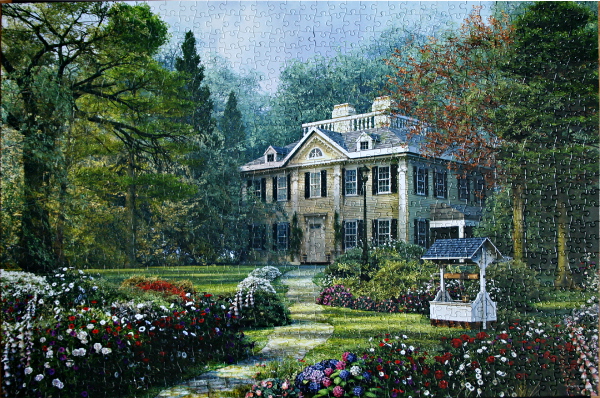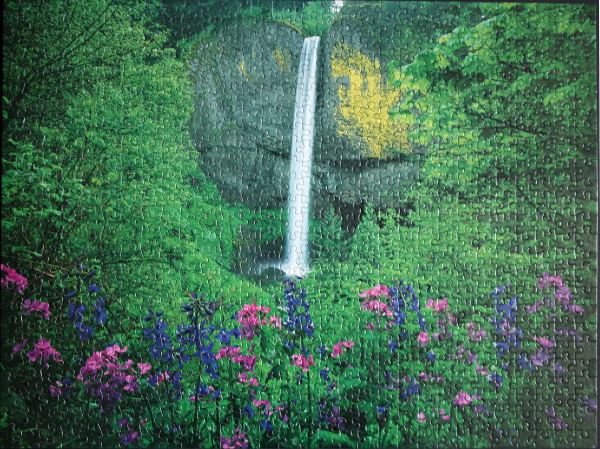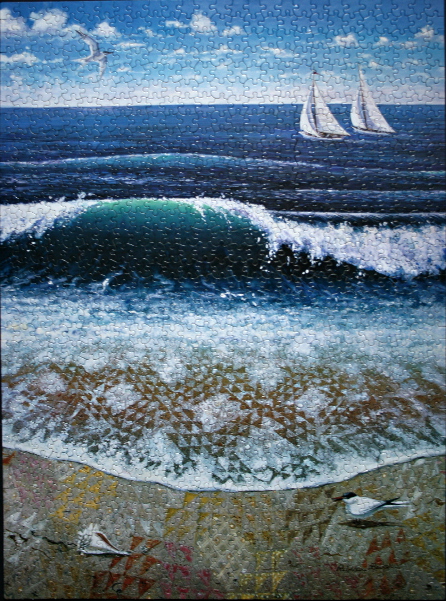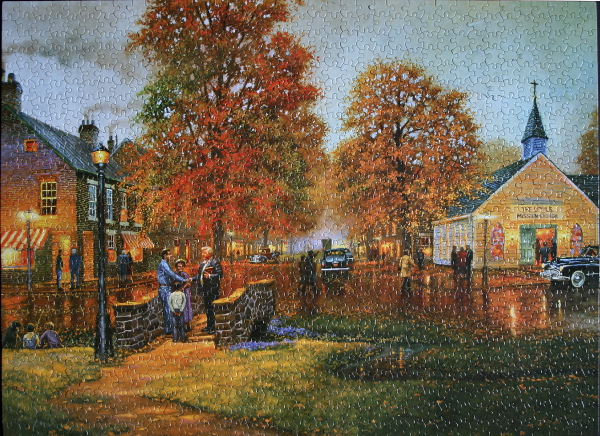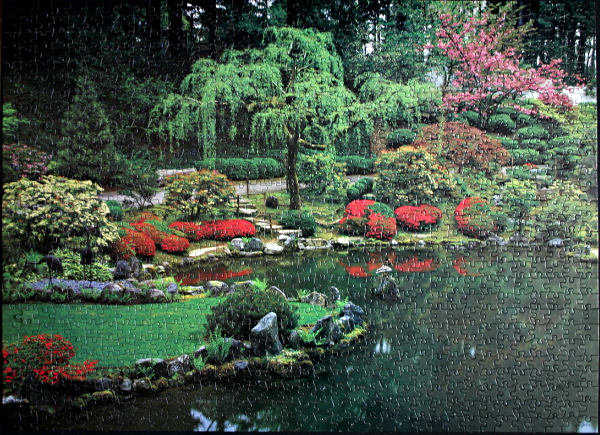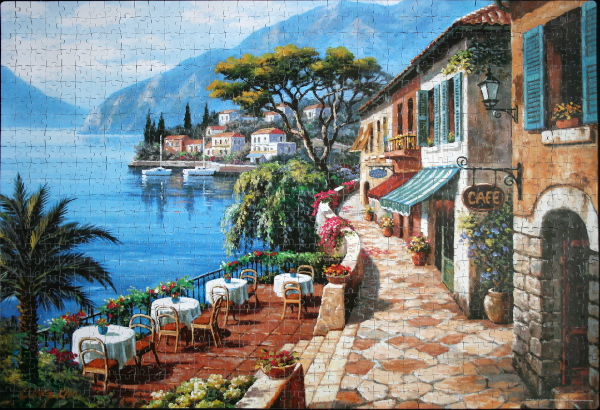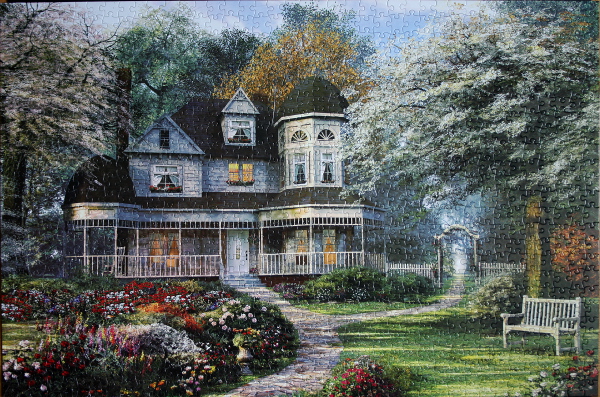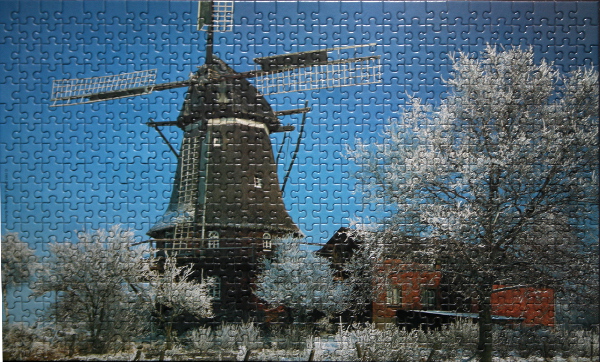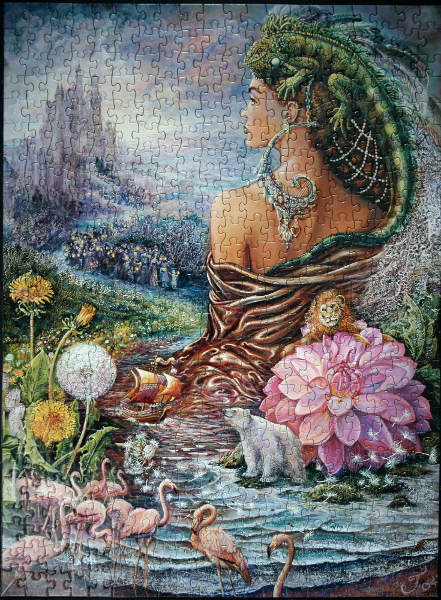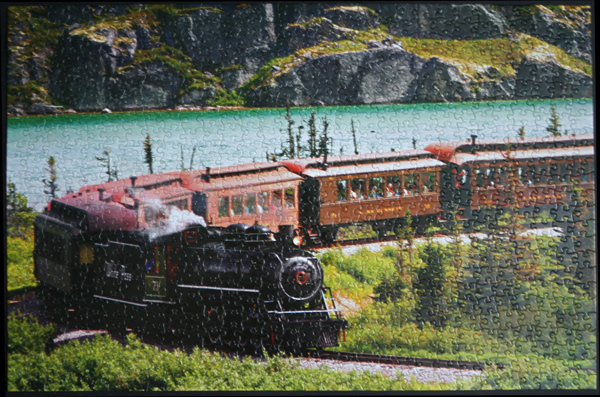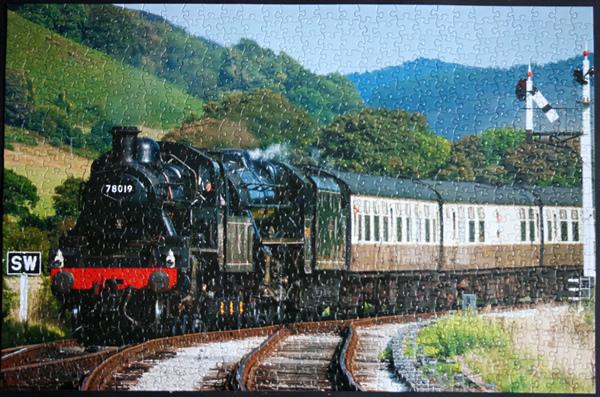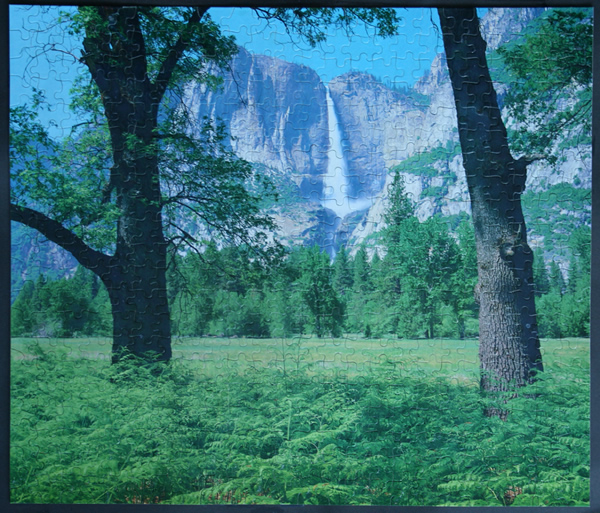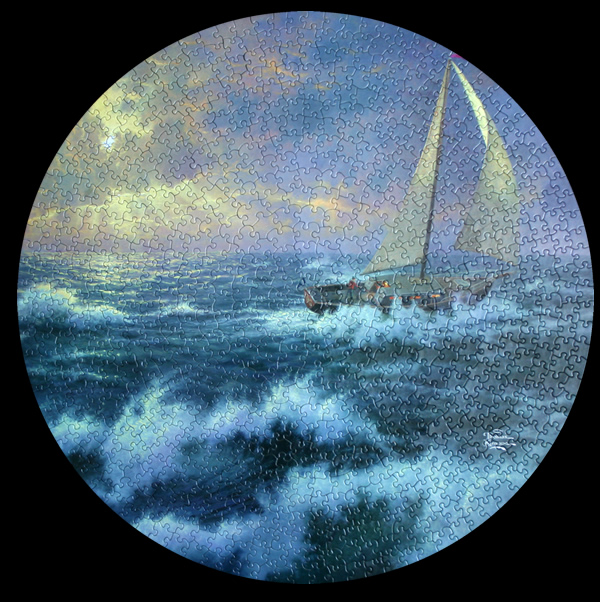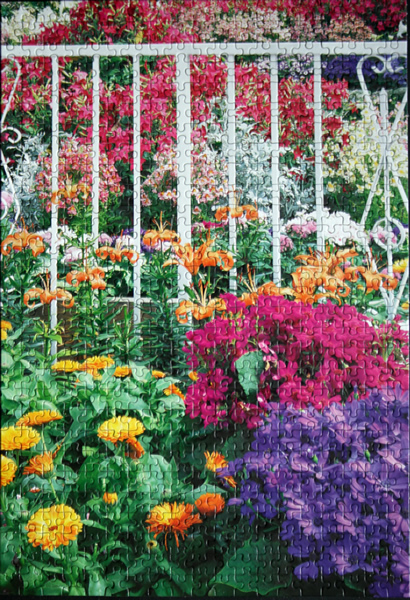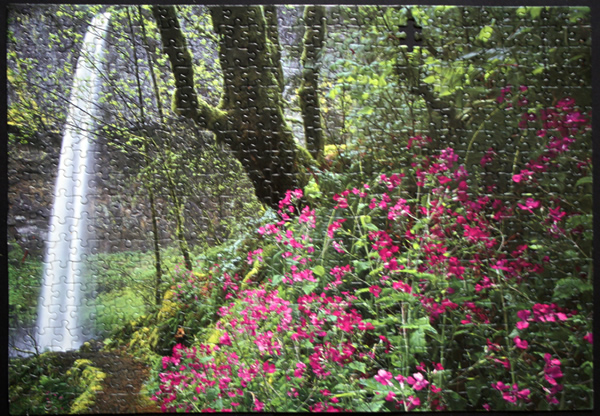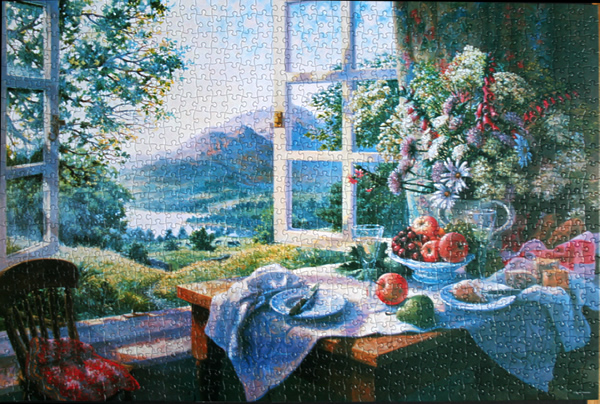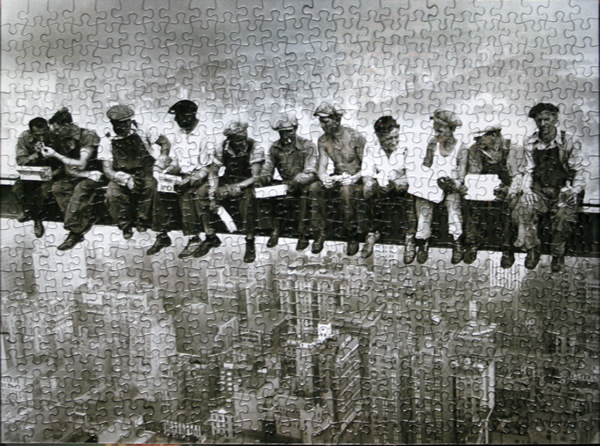Size: 1000 pieces
Dimensions: 73 cm x 48.57 cm
Artist: Dominic Davison
Producer: Sure-Lox, The Canadian Group, Country Manor series, 2011, #44612-1
Puzzle: A wonderful puzzle to do: Sure-Lox pieces fit together very well, as usual, and there is enough challenge while guide regions are available to provide a logical succession of assembly. One can start with the path to the front door of the building, separating the bottom half into two regions. The house and the well provide good anchoring regions. The grass and the patch of sky can be assembled easily. The tree trunks provide additional vertical guides. The rest of the regions take a bit more time to assemble. Good lighting is a bonus for the tree leaves.






